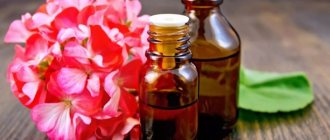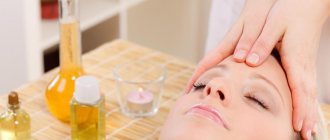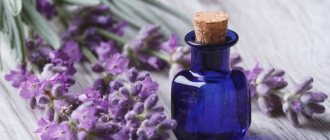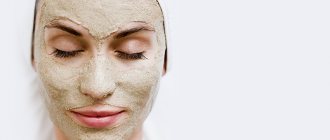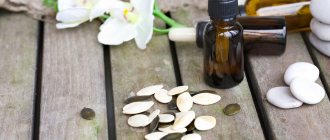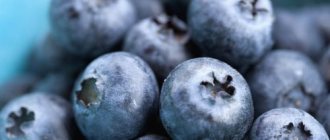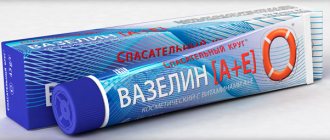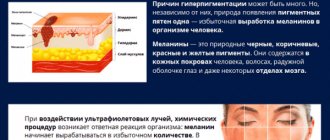- Benefits of Peppermint Oil for Acne
- Acne and peppermint oil
- How to Use Peppermint Oil for Acne
- Side effects
Is acne a big enough problem for you? Are you still unable to get rid of it despite using medications? Then peppermint oil is something that you should definitely try because of the wonderful properties that the oil contains.
Peppermint is one of the oldest aromatic herbs, very well known for its medicinal purposes. Peppermint is a type of mint plant. This greenish-purple colored leaf helps cure diseases such as colon spasms and indigestion in addition to pimples and acne. It can also be added to salads, to enhance the aroma Peppermint oil is obtained from the mint plant and the oil is pale yellow in color. It has a minty aroma that is cooling and refreshing. It can be taken as a dietary supplement or as an anti-acne skin ointment.
Benefits of mint for acne
The benefits of this medicinal herb for acne can hardly be underestimated. The leaves of the plant are known for their bactericidal and anti-inflammatory effects. The benefit of the herb for the epidermis lies in its unique composition, which includes:
- Menthol. Relieves the inflammatory process, destroys pathogenic microflora.
- Vitamin C. Normalizes metabolism, provides necessary nutrition.
- Arginine. Accelerates tissue regeneration.
- Essential oils. Normalize the functioning of the sebaceous glands, relieve the skin of unpleasant oily sheen.
- Organic acids. Remove age spots, promote exfoliation of dead skin, and add softness.
Home remedies for acne with peppermint oil
Salon procedures undoubtedly have a good effect, eliminate inflammatory processes, even out the surface of the skin and generally transform the face. Unfortunately, not everyone can afford to go to a cosmetologist. In such a situation, home remedies will help, which can help solve skin problems just as well.
- Keep the ripe tomato in boiling water for a couple of minutes, then plunge into cold water. Separate the skin and rub the pulp through a fine sieve. Add the juice of 3-5 fresh grapes, a teaspoon of sunflower oil, or olive or peach oil. Pour a tablespoon of starch into the resulting liquid mass and pour in 2 ml of mint oil. Leave the mask for 15 minutes and rinse with slightly salted water.
- Mix 15 g of blue clay with mineral water to the consistency of thick sour cream, add 3 drops of mint and one drop each of aloe, lavender and sage oil. Apply the composition to cleansed skin, avoiding the area around the eyes and leave for 15 minutes. Rinse off using a contrasting method, first with warm water and then with cold water.
Peppermint oil is a great helper that will keep your skin healthy and beautiful for a long time. The use of the product does not depend on the type, structure and age of the woman. The pleasant fresh aroma of menthol will lift your spirits in the morning and give you a boost of energy for the whole day.
Effect of mint on the skin
Peppermint can have different effects on the skin. Much depends on the type - what kind of skin, oily or dry. This is a must-have for those girls who want to get rid of acne as quickly as possible. Let's take a closer look at this.
For oily skin
Those with oily skin should burn pimples with mint oil using a cotton swab. In order to achieve the desired effect, the procedure must be repeated several times. Acne treatment should be carried out for one week.
A great option for oily skin is to add essential oil to your daily care cream.
For dry skin
It is better not to use it in its pure form. The greatest effectiveness can be expected when used simultaneously with honey or egg yolk. Natural berry juice has proven itself well.
Anti-acne
To get rid of acne, you can use diluted mint: it must be applied to the affected area. If you want to get a natural cosmetic against acne, just mix a few drops of peppermint oil with any other oil.
Rubbing the skin
In order to prepare a wipe, you need to mix geranium oil, mint and hazel oil in equal proportions (10 g each). Add 2-3 drops of tea tree oil. This product should be applied to the face 2 times a day after cleansing the face.
Facial peeling
Preparing a peeling mask is very simple. To do this, you need to take rice flour and grape seed oil in equal proportions, add 2 drops each of thyme, geranium, mint, and cinnamon oil.
The peeling mask is applied after wiping the face with chamomile infusion. As soon as the mask dries, another layer is applied on top of the first layer. Rinse off with warm water after 15 minutes.
Peppermint oil for face, proper use
Peppermint oil is mixed with base oils, creams, lotions, and added to homemade masks. By following certain recommendations for use, you can achieve excellent results.
- Peppermint ester is a highly concentrated product, so before using it you need to conduct an allergy test on exposed skin. Keep the product for 10 to 30 minutes and if everything is fine, then apply it to the face. This primarily applies to those with sensitive skin.
- Observe dosages when added to a cosmetic product and, especially, when used as an independent preparation. Measure peppermint oil only in drops in the amount indicated in the recipes.
- Masks and compresses are used only on clean and slightly steamed skin. The duration of action should not be more than 40 minutes.
- Peppermint ether in its pure form is used to treat pimples, pustules, herpes only locally for oily and combination skin.
You can achieve great results with mint oil for your face.
Recommended doses depending on the method of use are:
- applications - basic small and mint in a 1:1 ratio;
- masks - base 20 g, 5 drops of mint;
- compress - alcohol 20 ml, 10 drops of oil.
Exceeding the dosage can lead to irritation and burning of the skin.
Peppermint remedy for acne
To combat acne, both fresh and dried leaves of the plant and mint essential oil help. Let's look at the most effective means in more detail.
Mint compress
Soak a soft cloth in hot mint infusion, squeeze a little and apply to face. The compress must be kept until it cools down. Then repeat the procedure 2 more times.
Water infusion of mint leaves
To prepare an aqueous infusion, you need to take 20 grams of dry leaves of the plant, add 70 ml of water and put on fire. As soon as the water boils, remove the pan from the stove, cover and leave for 2 hours. The infusion must be stored in the refrigerator. Shelf life: 5 days.
Mint cream
Mint also helps against acne in the form of a cream. To prepare it you need 5 ml of mint essential oil and 10 ml of natural jojoba oil. After pre-cleansing the face, apply to the skin, avoiding the area around the eyes.
The cream should be used at night. This is an excellent prevention against acne.
mint ice
Dissolve 30 grams of honey in 200 ml of water, add 3-5 drops of peppermint. The resulting liquid must be poured into ice molds and placed in the freezer. As soon as the mint ice is ready, rub the cubes onto your face. This will help relieve inflammation and get rid of acne.
Peppermint lotion
Add 5 drops of peppermint oil to 200 ml of mineral water. Stir until the mint oil has dissolved. The mint solution should be used at least 2 times a day.
Mint decoction
It is very simple to prepare a healing decoction. All you need to do is pour 30 grams of herbs into 200 ml of water, boil for 7-10 minutes, then leave for half an hour. As soon as the broth has cooled, it needs to be strained.
Mint scrub
To prepare the scrub you will need mint and jojoba oil and sugar. Mix 50 grams of sugar thoroughly with oils - the scrub is ready. Before using it, you need to steam your facial skin.
Mint lotions
To make lotions, you can use oil. You need to moisten cotton pads in it and apply it to the problem area on your face. You can keep the lotion for no longer than 15 minutes.
Acne and peppermint oil
Poll: When did your acne appear? (Number of votes: 4295)
I've been suffering all my life
It's been a couple of years now
About a few months
Recently
To vote, click on the desired answer. results
Acne is the most common skin condition today Acne occurs when the pores of the skin become clogged due to excessive production of sebum Dead skin cells become trapped inside the pore, bacteria present on the surface of the skin enters and multiplies, thus inflaming the pores and producing acne.
There are various treatments for acne, but peppermint oil acts as a natural remedy for this skin problem. Matya contains menthol, which is an astringent used in most skin care products.
Peppermint oil acts as a natural cleanser for the skin. Along with this, it has antimicrobial properties due to which it prevents the growth of bacteria.
Clogged pores and the growth of bacteria inside the pores are the two main causes of acne outbreaks When applied to the skin, peppermint oil acts as a cleanser by opening clogged pores and gently cleanses the skin It cleanses your face naturally Pre-cleansing your face helps reduce inflammation and also prevents further breakouts Acne First consult your doctor to find out your acne type before using this essential oil.
Applying peppermint oil once a day will greatly help reduce oil production on your face.
Side effects
We found out whether mint helps with acne. If used in reasonable quantities, the medicinal herb is unlikely to cause side effects. However, there is always the possibility of allergic reactions on the face. Most often, skin irritation occurs, manifested in minor itching and redness.
Due to the menthol included in the medicinal herb, frequent use can cause skin damage. Pure peppermint oil is a highly concentrated substance, so it should not be applied to the skin in its pure form.
X
Making your own peppermint oil
Of course, you can buy this remedy at the pharmacy, but if you have the opportunity to collect fresh leaves of the plant, it is better to prepare the medicine yourself. Homemade mint oil is not only natural, but also has an increased amount of beneficial elements, as well as a more pronounced anti-inflammatory effect.
To prepare the drug you will need natural vegetable oil. It is recommended to choose olive, almond or jojoba. Mint leaves must be properly prepared; to do this, they should be washed, dried and kneaded thoroughly. For example, leaves can be beaten using a kitchen wooden mallet, after placing them in a sealed plastic bag. It is not recommended to use metal containers and objects during the cooking process, as this will destroy many useful substances.
The resulting mass should be placed together with the plant juice in a glass container and filled with the selected oil, seal tightly and put in a dark place to infuse for 1 - 2 days. After this, the oil must be carefully filtered into a dark glass bottle and placed in the refrigerator for further storage.
The benefits of essential oils for problem skin
Essential oils easily penetrate into the deep layers of the skin, providing active effects:
- antimicrobial;
- anti-inflammatory;
- regenerating.
This is what explains their high efficiency and quick results. In addition to their healing properties, aromatic oils have a mild therapeutic effect on the body as a whole, help cope with stress, calm or invigorate, depending on the properties of the particular ester.
Essential oils will help tidy up your skin and eliminate acne and their marks.
Rules of application
Remember the main rule: aromatic oils should not be applied undiluted to the skin. This can cause redness, swelling and other manifestations of allergies, as well as chemical burns. An exception is the spot application of ether to the affected area using a cotton swab. This option is only allowed if you have good tolerance to the product.
In other cases, use aroma oils diluted: add 1-2 drops of essential oil to 1 tsp. base (or 4-7 drops to 1 tbsp.) and stir. This proportion is universal, but for different esters there may be other options - then this is indicated in the instructions or in the specific mask recipe.
As a base oil, you can choose olive, apricot kernel, jojoba, coconut and even sunflower
Be sure to do an allergy test before using any new oil. To do this, mix 3 drops of ether with 1 tsp. sunflower or olive oil. Apply the mixture to the inside of your elbow and wait two hours (or better yet, leave it overnight). If the skin at the site of application remains unchanged, you can safely use this aroma oil.
Spot application of tea tree oil - video
How to choose the right essential oil
When choosing aromatic oils, always take into account the individual characteristics of your skin and the body as a whole. There is no single correct answer to the question of treating pimples with ethers, but there are general recommendations and a large selection of these aromatic healers.
Many essential oils that have strong disinfectant properties work well against acne. Here are just a few of them:
- tea tree is a powerful natural antimicrobial and wound healing agent;
- eucalyptus - has a bactericidal, analgesic and regenerating effect, whitens the skin and regulates fat metabolism in it;
- clove is an anti-inflammatory and antiseptic aroma oil, which is especially recommended for suppuration (when combined with other esters, it enhances their effect);
- mint - helps improve blood circulation in capillaries, activates the protective functions of the skin;
- conifers (pine, fir, cedar) - effectively treat pimples, promote rapid skin restoration, reduce sebum secretion;
- citrus fruits (lemon, orange, grapefruit) - eliminate acne and blackheads, and also gently whiten the skin and restore its elasticity (these oils are phototoxic, so they cannot be used for prolonged exposure to the sun).
Tea tree essential oil is one of the most popular remedies for acne and acne.
Phototoxicity is the property of aromatic oils to enhance the effects of ultraviolet radiation on the skin. With prolonged exposure to the sun, the area of skin on which such oil was applied may become unnaturally pigmented or burn.
The oils of the following plants are characterized by a more delicate and gentle effect, improving the condition of the skin as a whole:
- roses are a powerful regenerating agent that helps normalize the condition of the skin;
- sage - has pronounced anti-inflammatory and soothing properties;
- lavender - a universal aroma oil, promotes wound healing, prevents the growth of bacteria, eliminates peeling, has a calming and rejuvenating effect;
- rosemary - eliminates inflammation, accelerates the resorption of scars, increases blood circulation and makes the skin more elastic;
- geranium - normalizes the functioning of the sebaceous and sweat glands.
Spot application of lavender oil on acne will help soothe the skin, relieve inflammation and speed up the regeneration process.
A few tips for choosing essential oils will also be helpful:
- choose only a high-quality product from a trusted manufacturer, and also do not forget to check the expiration date of the product;
- the best packaging is a small dark glass bottle with a dispenser;
- carefully study the contraindications indicated in the instructions (this is especially true for pregnant women: many aromatic oils cannot be used during this period);
- When using an essential oil for the first time, smell it: if the smell is unpleasant to you, it is better to refrain from using this product.
Which oil to choose as a base oil
Oils that do not clog pores and have a light consistency are suitable as a base:
- grape seeds - regulates the secretion of sebum (it dries oily skin, moisturizes dry skin), has a bright cleansing and regenerating effect;
- jojoba - this liquid wax perfectly nourishes, moisturizes, rejuvenates the skin and relieves inflammation;
- hazelnut - helps to narrow pores, is perfectly absorbed without leaving a greasy residue;
- macadamia - valued for its rejuvenating and restorative properties, moisturizes the skin and protects it from the negative effects of free radicals;
- black cumin is an effective remedy for acne, helps stop various inflammatory processes and accelerate the regeneration of skin cells (it is better to use diluted: add 3 parts of another base oil to 1 part of cumin oil).
When choosing a base oil, do not forget to do a sensitivity test.
In addition to the listed oils, you can use the following as a base for masks:
- clay;
- low-fat kefir;
- seaweed paste;
- brewed rice and oatmeal;
- fruit puree;
- honey.
How to choose an essential oil?
- It is worth understanding the difference between aromatic and natural essential oils; the former can be synthetic and sold in plastic bottles. Choose only natural ones - they are sold in glass.
- Also note that some essential oils do not exist in nature! These are kiwi, melon, watermelon, strawberry, mango and banana, cucumber, lotus, magnolia, apricot, peach, linden, lilac, apple blossom, lily of the valley, coconut, fern. These plants are simply not essential oils - and what is sold in the pharmacy is just a trick of the manufacturers.
This is interesting: Coconut oil for hair - use for 5 problems!
#2 Rosemary essential oil for acne
Action: anti-edematous and absorbable, antiseptic, antifungal, analgesic, shrinks pores and rejuvenates the skin (smoothes out wrinkles), stimulates cell regeneration and blood circulation, heals wounds and scars, boils.
Indications: dermatitis, abscesses and phlegmon, eczema, burns, scars, wounds, acne, fungal diseases.
Opinion: spot application of rosemary essential oil removed post-acne spots.
#7 Orange essential oil for acne
Action: removes toxins from the body, whitens the skin and smoothes wrinkles, moisturizes dry skin, relieves swelling.
Indications: care for sensitive and dry skin with wounds, acne, swelling, wrinkles.
Opinion: I’ve been using orange oil in an aroma lamp for a long time – I’ll tell you honestly, in addition to the pleasant smell, the plus is that it also lifts your mood.
And then I read about its other properties and began mixing it with grape seed oil (a couple of drops of essential oil dropped per 20-30 grams) and smeared it on my face every night - after a few weeks I noticed how it had changed: fine wrinkles smoothed out and my face became much fresher.
#4 Lemon essential oil for acne
Action: stops bleeding, relieves pain, swelling, heals wounds, removes warts, smoothes and whitens the skin, regulates metabolism.
Indications: warts, dandruff, lichen, boils, burns and cuts, age spots and freckles, cracks on the soles, herpes, wrinkles.
Opinion: In the summer, when pigment spots and small rashes appear on the skin, I always make a mask of white clay and drop a few drops of lemon essential oil into it - the rash goes away in a couple of days, the skin brightens significantly, and the spots simply disappear before our eyes!
Mint for beauty: 9 recipes for your home medicine cabinet
It has long been known that mint has a positive effect not only on the internal state of the body, but also on the appearance. This plant has a particularly good effect on the skin of the face, body, and hair. In combination with some natural remedies, mint refreshes, mattifies, removes fine wrinkles, relieves inflammation and signs of fatigue.
This herb can be used to make cubes, infusions, lotions, masks and much more. Try these healthy beauty recipes using mint.
1. Mask to relieve tired eyes
You will need:
- 5 mint leaves;
- 3 tsp. lemon balm leaves.
Pour hot water over the ingredients and leave for half an hour. Place the resulting mass on cotton pads. Apply them to your eyes for 12 minutes.
2. Wonderful mask for all hair types
You will need:
- 0.25 bunch of mint;
- 2 tsp. lemon balm leaves;
- 2 tsp. oak bark;
- 2 tbsp. kefir with a low fat content;
- 0.7 boiling water.
Pour hot water over mint, lemon balm and oak bark. Insist all night. Drain the water, cool the pulp and add kefir. Rub the mask into the roots of your hair and distribute along the entire length. Leave it for a while. Wash off with shampoo.
3. Refreshing ice for face
You will need:
- 1 tbsp. l. dried mint leaves;
- 1 tbsp. l. coltsfoot flowers;
- 1 tbsp. l. linden flowers;
- 2 tbsp. boiling water
Mix dried flowers, mint and pour boiling water over it all. Leave covered until cool. Pour the broth into ice cube trays and freeze. Use the product every morning.
4. Refreshing and whitening mask
You will need:
- 0.5 tbsp. chopped cucumber;
- 1/4 tbsp. mint leaves.
Grind the cucumber in a blender. Place the pulp in a saucepan and add water. Place on low heat. Bring to a boil, add finely chopped mint and cook the mixture for another 3 minutes. Once ready, let cool. Apply for 20 minutes. Then wash it off.
5. Mask for combination skin
You will need:
- 2 tbsp. l. cosmetic white clay;
- 1 tbsp. l. finely chopped mint leaves.
Add clay to mint leaves. Fill with water to form a thick mass. Apply for a quarter of an hour. Afterwards, wash it off.
6. Gentle oatmeal scrub
You will need:
- 0.25 tbsp. oatmeal;
- 15 g dried mint leaves.
Mix the ingredients. Grind all ingredients in a blender. Before use, dilute with warm water.
7. Amazing anti-aging face mask
You will need:
- 2-3 tbsp. l. pumpkin pulp;
- 4 tbsp. l. honey;
- 5-6 fresh mint leaves;
- 0.5 tsp. starch.
Chop the mint and add the rest of the ingredients. Mix and apply to face for 10-12 minutes. Don't forget to rinse off with water immediately after the time is up.
8. Nourishing face mask
You will need:
- 0.5 tbsp. l. mint leaves;
- 1 banana;
- 1 egg white;
- 1 tbsp. l. aloe juice
Chop the mint and mix with the rest of the ingredients. Beat the egg white before doing this. Apply for 20 minutes. Then wash it off.
9. Bath for soft and velvety hands
You will need:
- 50 g fresh mint leaves;
- 2 tsp. lemon balm leaves;
- 2 tsp. sage leaves;
- 1 tbsp. kefir;
- 0.7 liters of boiling water.
Pour boiling water over the herbs. Leave for half an hour, strain. Add kefir. When the infusion has almost cooled down, put your hands in it for 10 minutes. Then rinse them with warm water, let them dry without wiping with a towel, and lubricate them with nourishing cream.
#6 Bergamot essential oil for acne
Action: tightens pores, brightens the skin, normalizes the secretion of sebaceous glands, relieves inflammation, kills germs, promotes tanning.
Indications: psoriasis, eczema, ulcers, irritations, acne, pimples, boils and carbuncles.
Opinion: I have not used bergamot oil for medicinal purposes. But if you lubricate pimples with it, they will go away very soon. And you don't need to come up with any complicated recipes. Simply treat pimples with pure bergamot oil once or twice a day. They pass very quickly.
Contraindications to the use of mint
The aroma of cosmetology and dermatology oils is used to care for oily, aging, wrinkled, irritated skin. Helps cope with herpes, sunburn, and severe rosacea.
The result of the systematic use of mint ether in home treatments will be a lasting, pronounced effect:
- an effective remedy for the treatment of acne, acne;
- tightens pores, restores an even structure;
- increases the protective properties of the integument;
- relieves irritation and sensitivity;
- strengthens thin capillaries, prevents the formation of vascular networks;
- activates the synthesis of collagen and elastin;
- helps smooth out wrinkles;
- eliminates signs of fatigue, insomnia, restores lymph flow;
- improves metabolic processes at the cellular level, prevents withering and aging of the skin;
- has sebum-regulating functions, eliminates oily shine.
Like any medicinal plant, mint can negatively affect a person’s condition. It is not recommended to use it in any form if:
- A person has high blood pressure. This herb stimulates blood circulation, and after its use, a sharp jump in blood pressure may be observed.
- The woman is pregnant or is breastfeeding. Essential oils and other components of mint can cause high blood pressure, heartburn, drowsiness, and decreased lactation.
- A person suffers from varicose veins. Mint can reduce the tone of venous vessels, which can worsen varicose veins.
- There is an allergic reaction to this plant.
- A person is taking medications that cause drowsiness. This plant aggravates this condition.
If a person has a chronic disease of any nature, before using this medicinal plant, it is better to seek the opinion of a specialist in your specific situation.
It is believed that it is better to use it in courses so as not to cause an overdose.
The properties of mint and its use in various ways have been known for a long time. The oil gives a feeling of freshness and vigor. Depending on the chosen concentration, the actions of the product also change. If you notice wrinkles on your face, a tired, springy appearance, a flabby and sagging oval of the face, spider veins or pigmentation, then mint oil will help you.
If you have diseases associated with skin problems, you should use peppermint essence with great caution. Strict contraindications include:
- individual intolerance to the drug;
- pregnancy and lactation;
- hypotension;
- open lesions on the skin;
- children under 7 years old.
Peppermint oil for the face is not recommended for use during pregnancy.
It is not recommended to use the oil in conjunction with homeopathic medicines, since the former neutralizes the effect of the latter. Menthol has invigorating properties, so the best time for treatments would be morning or lunch.
Peppermint tincture for hair. Using mint for hair
The plant is suitable for therapeutic, restorative and nutritional procedures. This universal remedy has the following beneficial properties:
- moisturizes the scalp, relieves itching and irritation;
- has a positive effect on hair thickness, accelerates its growth, improves structure, makes it shiny;
- increases blood circulation;
- strengthens and nourishes hair follicles;
- exfoliates dead skin particles, eliminating dandruff.
The choice of means and method of recovery depends on what problem needs to be solved. To prevent hair loss, restore the pH of the scalp, and improve the structure along the entire length and ends of the strands, essential oil from dried plant flowers is used. The warm product is rubbed into the skin with massage movements. Thanks to the stimulation of blood circulation and the thermal effect, the hair follicles receive the necessary amount of nutrients.
Water infusions and decoctions of peppermint for hair help strengthen the roots and restore the structure of damaged and weakened curls. Rinse with mint after each shampoo. This gives the curls shine, makes them soft and light, making the hairstyle more voluminous. Aqueous decoctions of peppermint for hair are prepared from fresh and dry parts of the plant.
Mint masks are the most effective for hair health. They are used for quickly dirty scalp, increased dryness, and to improve the structure of brittle and thinning strands. The procedure is most beneficial for oily hair types. Mint juice normalizes the production of sebum, due to which the skin does not get dirty for a long time and the hair does not stick together.
To obtain the mask, the leaves and stems are crushed into a paste, which is then generously distributed over the entire length of the curls and scalp. The duration of the procedure is up to 60 minutes, regularity - at least 1 time per week.
An alcoholic tincture of peppermint will help restore the color of dull hair and restore a healthy shine. Before use, the tincture is diluted with chilled boiled water in a 1:1 ratio. The liquid is rubbed in 30 minutes before washing your hair, then rinsed off with running water, followed by shampoo.
With slow growth, severe split ends and flaking ends, peppermint for hair in the form of a spray helps. The liquid spreads evenly on the surface of the head and does not spill. An aqueous composition based on fresh leaves is applied daily along the entire length of the strands and on the partings.
Rules of application:
- To prepare rinsing and medicinal compositions, high-quality dry or fresh raw materials are selected.
- Fresh leaves are washed with cold water and dried on a paper towel.
- Masks and sprays are applied to slightly moistened hair, evenly distributing the mixture from roots to ends.
- To obtain maximum benefit, after applying the medicinal compositions, the head must be insulated.
- The plant should not be used if you are allergic to it or have hypersensitive skin.
- After the procedures, the hair should dry on its own.
Methods of application
Peppermint essential oil can be added to ready-made products, or based on effective natural creams and masks.
Before carrying out it is necessary to prepare the covers for the penetration of useful elements into the deep layers:
- Remove decorative cosmetics and wash with warm water.
- A scrub or gommage is used to soften and remove dead cells. Apply with light massaging movements, rinse with warm water. Apply before using a mask or peeling
- If mint oil is included in a cream or ointment, it is enough to cleanse the skin with a gel selected according to your skin type.
Features of mint essential oil
Like all plant extracts, peppermint essential oil is obtained by steam distillation from all parts of this fragrant plant. The drug is a clear oily liquid with a pronounced menthol aroma. During the processing of plant raw materials, the beneficial components of mint are almost completely preserved. Among the main active substances:
- organic acids;
- many vitamins, and the content of ascorbic acid is especially high;
- there are mineral elements;
- tannins are present;
- Almost 50% of the composition is menthol.
When it comes into contact with the skin, this substance causes a characteristic “chill”. It should be noted that many of the properties of the essential product are ensured precisely due to the presence of menthol.
I would also like to note the substance cineole, which can inhibit the aging process at the cellular level, and the active component phellandrene stimulates the synthesis of collagen fibers, which helps maintain the elasticity and firmness of the dermis.
Peppermint essential oil combines perfectly with other essential oils, which increases its medicinal value. The drug is especially useful for mature skin, which is more susceptible to age-related changes.
#3 Lavender essential oil for acne
Action: slows down the aging process of cells, antifungal and antiparasitic, promotes tissue scarring, soothes the skin, stops peeling.
Indications: acne, purulent wounds, abscesses, ulcers, burns, abrasions, psoriasis and dermatitis, herpes and lice.
Opinion: I’ve had problem skin since I was young, but now, of course, it doesn’t break out as much as it used to. But still, once a month on “these days” is stable - I save myself with lavender oil, it dries and heals very quickly, while the skin does not dry out much like with all sorts of alcohol lotions.
